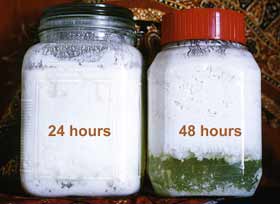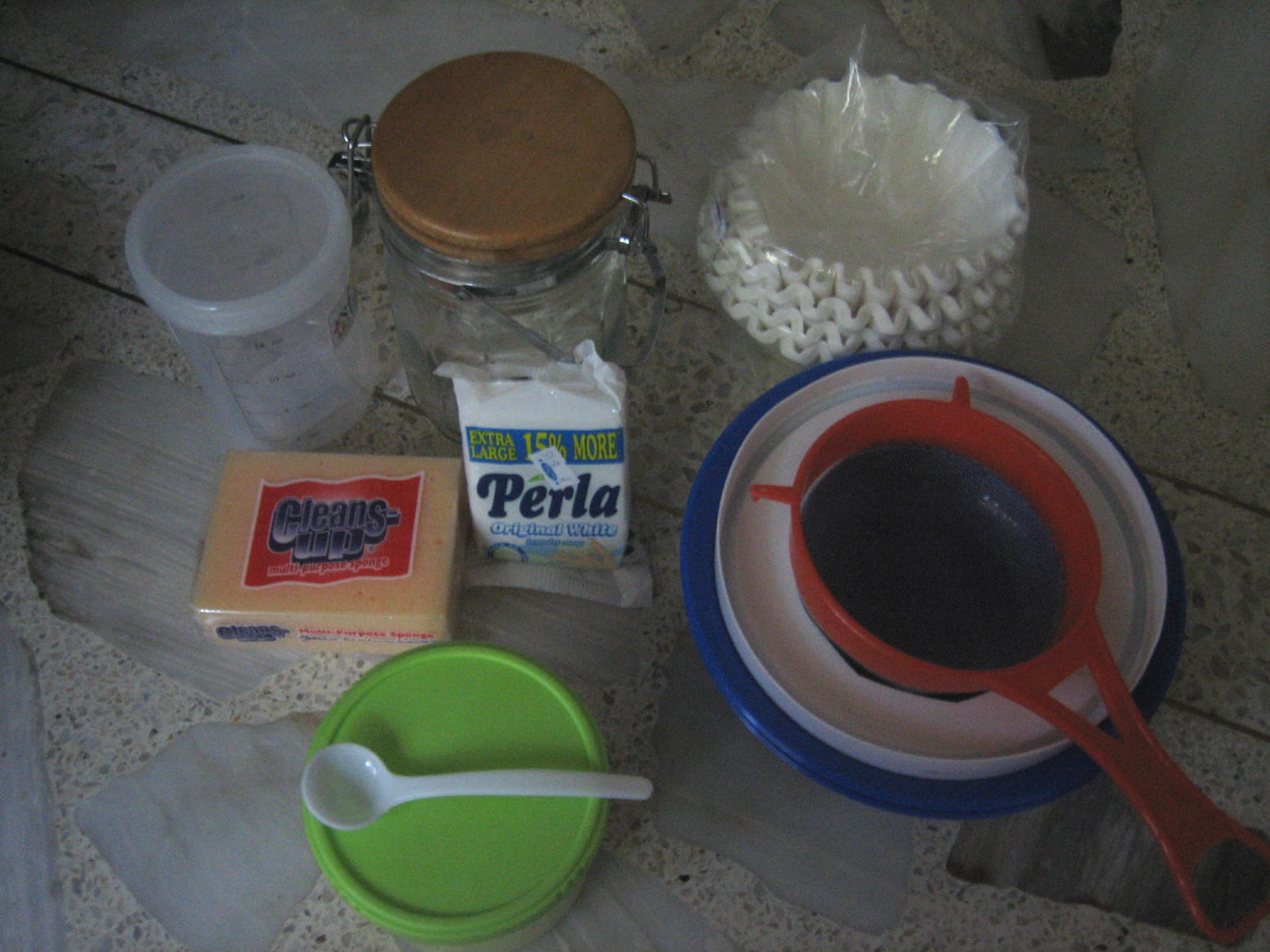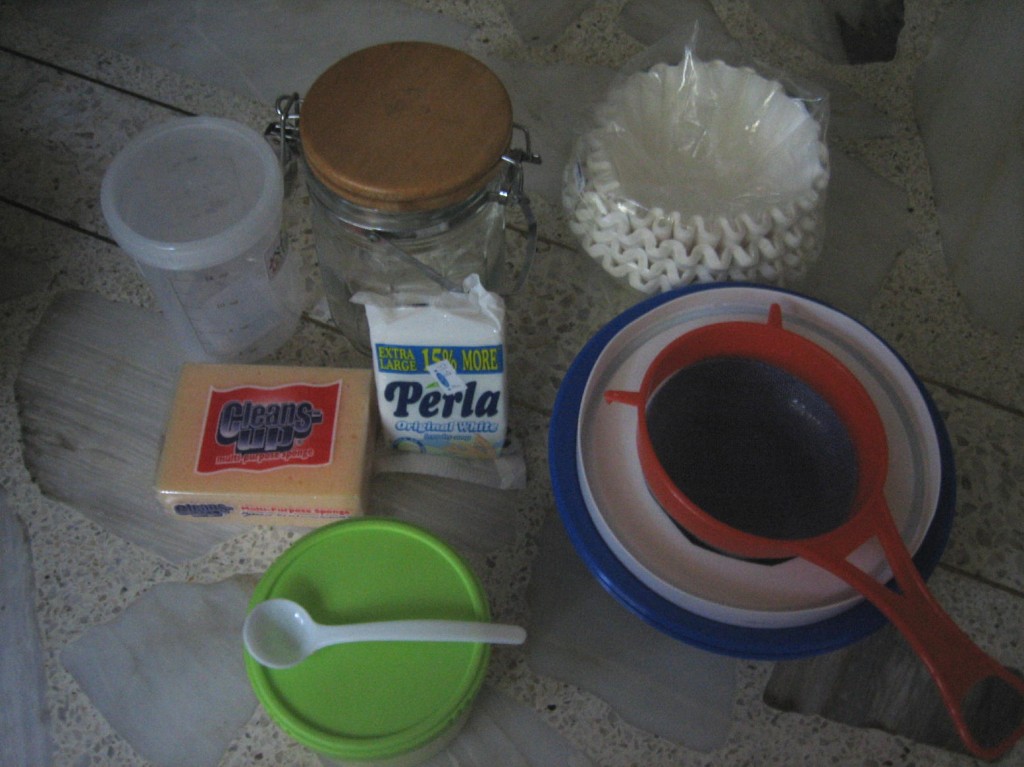
One day some weeks back, my friend Vera texted, asking if I knew what kefir was. Ke-WHAT???
Well, she explained that kefir is a fermented drink from cultured milk. Kefir itself is a living organism that looks like tiny cauliflower or sago (I actually think it looks like cottage cheese!). When mixed with milk, the milk is cultured and when strained, the strained liquid can be drank.
Kefir is touted to have many health benefits. Of course, since I just started, it remains to be seen. But on the internet, there are many testimonials as to its health benefits.
In a subsequent post, I will recount my own personal experience making it as I am just a newbie. Meanwhile, below is a bit of history and background to get you going.
(picture above is from Dom’s Kefir-Making Site)
——————————————————————————————————–
WHAT IS KEFIR?
By Egon Skovmose
http://www.danlac.com
In November 1881 the German naturalist Eduard Kern reported to Botanic Society in St. Petersburg about a mysterious beverage, which was exclusive common to the higher regions of the Caucasus and said to assure the inhabitants of this area good health and a very long life expectancy.
This beverage is kefir, a fermented milk product whose particular features is that in addition to lactic fermentation it also undergoes alcoholic fermentation caused by the presence of yeast, which yields this sourish, yeasty, sparkling, refreshing end product.
Kefir is not only a very valuable tasty, physiologically nutritional milk product it is said to be a “miracle” product.
Research conducted by East European institutes has proven that there is something to the reputation of kefir. In Rumania where research has been carried out by Professor Dr. Asian on the causes of old age, the effect of kefir on prolonging life is being studied. According to gerontologists at the Geriatric Centre of Suchumi (former USSR) the importance of kefir has not yet been completely recognized. The general opinion is that the life-prolonging effect is to be attributed to certain components of the kefir grains.
Moreover, kefir seems to have a stabilizing and, to some extent, a youth-preserving effect on the human organism, but only if one’s entire diet is completely altered and the kefir is not only consumed as a side-dish, a snack or a dessert. When following the kefir diet recommendations developed in Rumania, one’s organisms re-adjust within six months.
The functioning of liver, gallbladder, circulation, heart activity, metabolism, oxygen supply to the cells, blood circulation to the brain improves and stabilizes. Also so-called senility does not occur or is even reversed and the elasticity of the blood vessels and joints is restored. Rheumatism and coronary thrombosis do not stand a chance if a special kefir diet is followed: between the ages of 25 and 30 at the latest. 1-1/2 Tblsp. of kefir should be consumed twice a day. Numerous scientific tests are being performed to determine the effect of kefir especially in Eastern Europe.
Originally Kefir beverage was obtained by adding the so-called grains to fresh milk and then incubating them at 64 – 75º F for approx. 24 hours. The origin of Kefir grains themselves is unknown. To date it has not been possible to simulate the spontaneous formation of kefir grains using single isolates of kefir flora. New kefir grains can only be obtained from propagating and dividing of existing kefir grains. Click here to view a picture of actual Kefir Grains.
CHARACTERISTIC COMPOSITION OF KEFIR FLORA
Kefir is a natural probiotic. It contains live active cultures of normal flora that will actually repopulate your digestive tract and aid in digestion. Kefir is superior to yogurt because yogurt is made with transient, less potent bacteria.
The bacteria in yogurt will last a few days in the digestive tract, and you need to keep reintroducing them. Kefir contains more organisms than yogurt, and the “normal flora” in kefir is made of very strong strains of micro organisms (unlike yogurt) which will help to overtake pathogenic organisms that have taken over. Kefir will repopulate the digestive tract with good organisms. We consider this the more natural way to add good bacteria to the digestive tract and feel these strains are superior to any capsules which might contain organisms that have been dried.
The cultures on Kefir are active and growing when they enter your body. They thrive in dairy and use up the lactose and partially digest the proteins, making it a product that most people can ingest and will benefit from. Even people with milk sensitivities can usually drink kefir.
In addition to repopulating the digestive tract, enzyme stores are added to the body. Many people in the US currently take digestive enzymes. They have been told they are not digesting their food properly, that their enzyme stores have run out, and they will have to take enzymes the rest of their life. Unfortunately, their health care providers have missed something that Sally Fallon and the Weston A. Price people along with people like Donna Gates of Body Ecology have come to realize: that cultured foods will actually add back enzyme stores into the enzyme banks of the body and aid the body in digesting other foods.
Kefir, cultured cream, buttermilk, cultured vegetables, etc all add predigested food full of vitamins and minerals, normal flora, and enzymes to the body. We believe these are valuable foods, part of all good traditional diets, that have become lost in the society of today. And We believe bringing them back is essential for optimal health.
IS IT DIFFERENT THAN YOGURT?
Yes. There is research showing that Yogurt contains left turning bacteria and kefir contains right turning bacteria. This researcher even states that young children and nursing mothers should stay away from the left turning bacteria found in Yogurt. He shows from his research that kefir and its right turning bacteria are far superior and much more beneficial to the digestive tract than the cultures found in yogurt.
Yogurt contains transient bacteria and will not repopulate the digestive tract, but the active, growing, living cultures in kefir will.
The lactose in kefir is all digested by the time it is ingested, and some of the proteins have been broken down. Therefore, kefir can be used by many people who have sensitivities to milk. The same is not true with yogurt. Kefir can be made from any milk: goat, cow, ox, sheep, etc. A dairy-free kefir can also be made from young coconuts. This is very exciting.
IS TAKING PROBIOTICS JUST AS GOOD?
Probiotics are capsules or tablets that contain some of the same healthy bacteria found in kefir. The differences between kefir and probiotics are significant, however. While probiotics contain good organisms that can repopulate the digestive tract, they need to be kept dormant (refrigerated) and are not actively replicating and growing when they arrive in your intestines. In addition, they are not in any medium that will coat the digestive tract and help them to become established, but rather they are in the process of being dormant and are actually slowly decreasing in population as they die off over time.
Kefir, on the other hand has massive quantities of healthy normal flora that are in the process of growing, increasing in number, and thriving. They are eaten in the medium they are thriving in, such as the cultured milk or coconut water, which will coat the digestive tract and help them to establish residence there. This is a tremendous boost to your system and will repopulate your digestive tract more quickly, more efficiently, and more thoroughly than probiotics.




